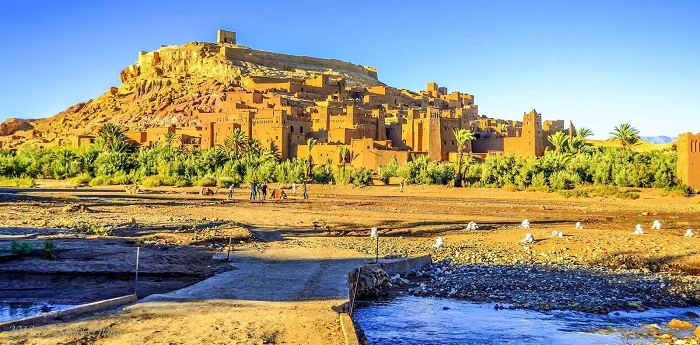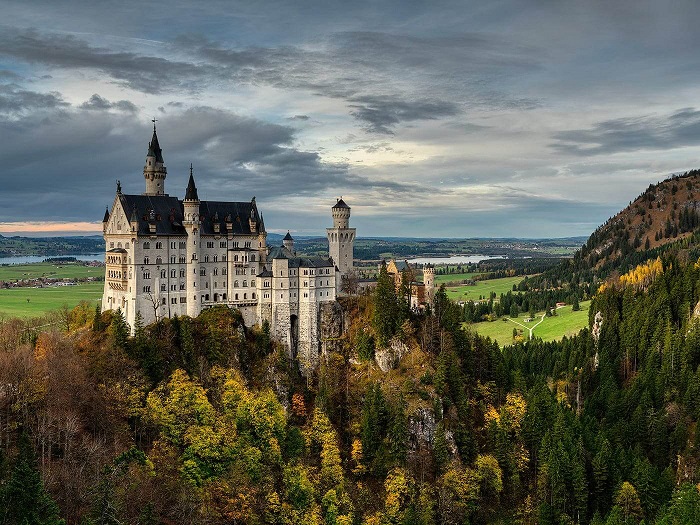ISABEL RUBIO ARROYO | Tungsteno
Neuschwanstein Castle, constructed in southern Germany on behalf of the Bavarian King Ludwig II, inspired Walt Disney to build Sleeping Beauty Castle in Disneyland. We investigate the mysteries and how the world's most famous and curious castles and fortifications were built: from Himeji Castle in Japan to the fortified city of Aït Ben Haddou in Morocco, which has been featured in series such as Game of Thrones and films on the big screen.
The castle that inspired Walt Disney
Neuschwanstein Castle embodies the prototype of the quintessential medieval castle, according to the Bavarian Administration of State-Owned Palaces, Gardens and Lakes. The foundation stone was laid on 5 September 1869. Although Ludwig II—also known as the "Mad King"—wanted the work to proceed quickly, it was a major project, as building such a structure on a mountain was a complicated undertaking. Ludwig II was only 24 years old when construction began. He moved into the Gateway Building, the first section to be completed, in 1873, but the palace building was not fully habitable until 1884.
"Set designers, architects and artisans implemented the king's detailed ideas. The inconsiderate deadlines he set could sometimes only be met by working day and night," explains the Bavarian Administration. The style of the building evolved according to the wishes of Ludwig II and on the basis of the drawings he had commissioned from Munich scenographer Christian Jank. It went from being initially a small robber baron-style castle with late Gothic elements to "a monumental 'Romanesque' castle." Its main rooms are decorated with murals depicting scenes from the Germanic and Nordic sagas on which the composer Richard Wagner based his works.
This fairy-tale castle, which is thought to have inspired Walt Disney, is now one of the most visited castles in Europe, receiving approximately 1.4 million tourists a year. Inside, there is a walled courtyard, an indoor garden, spires, towers and even a man-made cave. Being in a mountainous area, movement in the foundation area has to be continuously monitored and the sheer rock walls must be regularly secured. In addition, harsh weather conditions sometimes damage the limestone facades, which require rehabilitation measures.
Neuschwanstein Castle is one of Germany's most famous tourist attractions. Credit: DW Travel
An almost impregnable Japanese fortress
Renowned for both its beauty and defensive ingenuity, Himeji-jo is the finest surviving example of early 17th-century Japanese castle architecture, according to the United Nations Educational, Scientific and Cultural Organisation (UNESCO). It is called the White Heron Castle because of its resemblance to an elegant white heron the moment before it takes flight. This enormous wooden fortress, which dates back to the 14th century and has undergone several restorations, is built on two hills. The fortress covers a total of 107 hectares and consists of more than 80 buildings.
The defensive measures include small openings in the walls lining the path, which would have allowed defenders to attack their enemies with boiling water or projectiles. Some gates are particularly narrow to prevent large groups from advancing, and the outer wooden walls are covered with white plaster to protect the building and its occupants from fire. In addition, the watchtowers are connected by winding passages to confuse invading enemies. Despite all these measures, the castle was never the scene of a battle. Today, it is a tourist attraction in the Japanese city of Himeji and a UNESCO World Heritage Site.
Himeji Castle is known as the "White Heron Castle" and is renowned for its defensive ingenuity. Credit: Sony
A city of sandcastles
From The Mummy and Gladiator to Alexander the Great, Kingdom of Heaven and Game of Thrones, these are just some of the movies and TV series that have been filmed in Aït Ben Haddou, a fortified town in the Moroccan province of Ouarzazate that at first glance looks very different from the typical European castle. Situated on the edge of a desert, it is made up of walls and structures dating from the 17th century and constructed of rammed earth, adobe, clay bricks and wood.
Aït Ben Haddou has been declared a World Heritage Site by UNESCO, which describes it as a striking example of southern Moroccan architecture. Inside the defensive walls, reinforced by angled towers, houses—some modest and others resembling small urban castles—are crowded together with buildings and communal areas. "Architecturally, the living quarters form a compact grouping, closed and suspended," says UNESCO. The communal areas include a mosque, a public square, grain threshing areas outside the ramparts, a fortification and a loft at the top of the village, two cemeteries (Muslim and Jewish) and a shrine.

Aït Ben Haddou appears in movies and popular series such as Game of Thrones. Credit: Wikimedia Commons
These are just some of the world's most iconic castles and fortifications. But there are many more: from Corvin Castle in Romania, where Vlad the Impaler, the ruler who inspired the story of Dracula, was supposedly imprisoned for several years, to the Alcazar of Segovia in Spain, which began as a Roman fort. Other highlights include Windsor Castle in the UK, one of the residences of the British royal family; Château de Chenonceau in France, built over the River Cher; and Predjama Castle in Slovenia, constructed at the entrance to a cave.
· — —
Tungsteno is a journalism laboratory to scan the essence of innovation. Devised by Materia Publicaciones Científicas for Sacyr’s blog.
